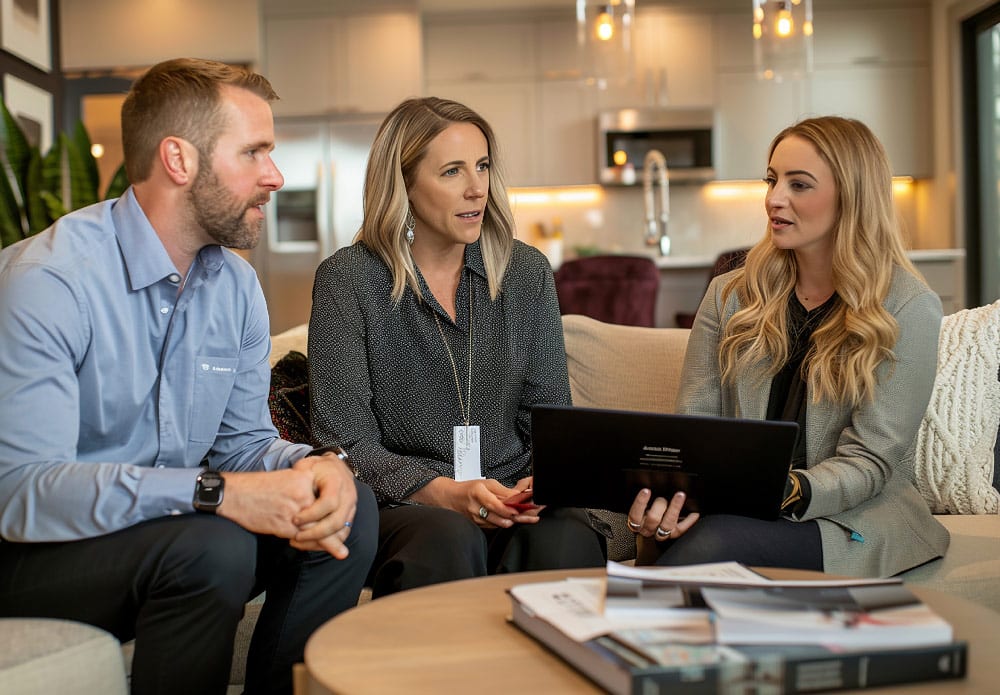Table of Content:
- The Social Authority Formula: How to Add Expertise to Your Words and Posts
1.1. How to Effectively Use Social Networks
1.2. Why It’s Important to Make Video Content
1.3. Why It’s Important to Get Recommendations from Specialists in a Related Field - Three Types of Lead Flow: Broker, Insurance Adviser, Wealth Adviser
2.1. What Kind of Broker Are You? Define Your Niche - What platforms are best for generating reviews if you are a mortgage broker?
3.1. How to get reviews on ProductReview.com.au and Trustpilot - Why does a mortgage broker need a profile on Google Maps?
- Why does a mortgage broker need a website, and how to create one?
- Why do you need referrals as a mortgage broker?
- How can a newsletter help a mortgage broker?
- Why does a mortgage broker need content marketing?
8.1. How to create the right content if you are a mortgage broker?
8.2. How to create your own webinar? - Why should a mortgage broker be active on Quora and Reddit?
- Where is it better to buy paid advertising if you are a mortgage broker?
10.1. What is the advantage of advertising in Google Ads for a mortgage broker?
10.2. What is the advantage of advertising on Instagram for a mortgage broker?
10.3. What is the advantage of advertising on Facebook for a mortgage broker? - What is the benefit of networking for a mortgage broker?
- Why does a mortgage broker need paid listings?
For mortgage brokers, generating a steady flow of qualified leads is the foundation of a successful business. In a competitive and regulation-driven industry, knowing how to generate mortgage leads both online and offline is critical to surviving and thriving. Whether you’re a solo broker, part of a franchise, or just starting out, the key lies in building trust, leveraging smart tools, and maintaining consistent client engagement.
Here’s a breakdown of proven strategies mortgage brokers can use in Australia in 2025 to attract quality leads and convert them into clients.
1. The Social Authority Formula: How to Add Expertise to Your Words and Posts
In the world of mortgage broking, generating leads isn’t about going viral or chasing social media trends. Unlike influencers or entertainers, a mortgage broker doesn’t need to focus on likes, views, or shares. The goal isn’t visibility for visibility’s sake—but rather to build trust and credibility through repeated, meaningful brand touch points. The core of effective lead generation is creating an authoritative presence that reassures potential clients, both online and offline.
In this context, social media is not a stage for performance but a platform for consistency. A broker’s online presence must align with their real-life image. If a broker presents themselves one way in videos and appears differently in person, it causes a brand disconnect, reducing trust. Even subtle mismatches can break the sense of familiarity that builds confidence. A professional who appears authentic and recognisable across all platforms—whether on social media or at a local café—strengthens their authority.
The first thing any mortgage broker who wants to generate leads should do is find all the social networks of successful mortgage brokers and see how their Authority works.
Looking at other mortgage brokers can offer insight. Brokers who are perceived as experts tend to maintain clear messaging, repeatable style, and visible community presence. They don’t rely on flashy tactics but instead build familiarity through consistency and simplicity. Their authority is grounded not in entertainment value but in reliability and professionalism across every brand touch point—from social posts to local interactions.

1.1. How to Effectively Use Social Networks
Social media is one of the most powerful organic tools a mortgage broker can use to build visibility and generate leads. It isn’t about going viral—it’s about consistency and value. Platforms like Facebook, LinkedIn, Instagram, and TikTok allow brokers to demonstrate their knowledge, connect with potential clients, and stay top of mind during the client’s decision-making journey. Posts should educate rather than sell: explain the mortgage process, provide updates on interest rates, or debunk lending myths. Authenticity is key. A broker who posts regularly about real-life client experiences or answers common questions will naturally attract attention from prospective leads. Engaging with users—commenting on posts, replying to questions, or joining relevant groups—strengthens your digital presence. Success on social media doesn’t come from chasing likes; it comes from building trust one post at a time.
1.2. Why It’s Important to Make Video Content
Video content adds a human dimension that written posts cannot replicate. Seeing a broker’s face, hearing their voice, and watching them explain complex mortgage topics makes them more relatable and trustworthy. Short-form videos—on platforms like Instagram Reels, Facebook Reels, TikTok, and YouTube Shorts—are particularly effective in catching attention quickly. Explaining things like “what lenders look for in your credit file” or “how to increase borrowing power” in under 60 seconds is a powerful way to deliver value. For Australian brokers, video also reinforces familiarity. When a potential client sees a broker on video and then meets them in person, the sense of continuity helps build rapport. Testimonials in video format are especially impactful because they showcase genuine customer outcomes and emotions, which resonate more deeply with viewers than text reviews.
1.3. Why It’s Important to Get Recommendations from Specialists in a Related Field
Referrals from professionals in related industries are one of the most consistent and trusted sources of broker leads. Mortgage decisions are often triggered by life events—buying a home, changing jobs, or tax planning—many of which involve other advisors. Real estate agents, for example, are key partners since home buyers naturally look to them for advice. Accountants and financial advisers are also crucial, particularly for self-employed or high-income clients. When these professionals trust a broker enough to recommend them, it acts as a powerful social endorsement. The client doesn’t view the broker as a stranger—they see them as an extension of the trusted adviser they already rely on. These warm leads convert more easily and are often higher in value. Cultivating these relationships takes time, but the long-term payoff is significant, creating a steady flow of high-trust introductions without ongoing ad spend.

2. Three Types of Lead Flow: Broker, Insurance Adviser, Wealth Adviser
Understanding the nature of different lead sources is essential to refining a mortgage broker’s marketing strategy. Lead flow isn’t one-size-fits-all. Brokers, insurance advisers, and wealth advisers each operate within different psychological frames, and recognising these differences is crucial. A mortgage broker’s lead flow depends more on trust-building over time, often rooted in emotional and financial security.
For mortgage brokers, a referral from a trusted source—such as a real estate agent or past client—is the most powerful form of lead. Unlike insurance or wealth advice, mortgage decisions are often triggered by life events: buying a home, moving suburbs, or starting a family. These are deeply personal moments, meaning the broker must be seen not just as knowledgeable, but as safe, approachable, and human. The best referrals come when someone can confidently say, “I know someone who will look after you.” That personal endorsement becomes the bridge between hesitation and action.
The psychology of trust plays a central role. Clients rarely make a snap decision to use a broker. Instead, they absorb dozens of brand touch points—watching videos, reading posts, hearing your name mentioned—before finally engaging. The decision is rarely based on a single post or pitch; it’s the result of a consistent presence that conveys stability and expertise. That’s why lead flow is directly tied to how consistently a broker shows up in a recognisable and reliable way.
2.1. What Kind of Broker Are You? Define Your Niche
To build a sustainable mortgage broking business in Australia, identifying a clear niche is essential. Clients don’t just choose a broker—they choose someone who understands their specific situation. Choosing a niche allows a broker to communicate with authority and relevance, making it easier to attract high-quality leads. Niches may include:
- First-home buyers
- Self-employed clients
- Refinancers
- Property investors
- High-net-worth individuals
- Clients with poor credit histories
- Regional or rural buyers
- Foreign investors
- Construction or renovation finance
- SMSF lending clients
A well-defined niche enables more targeted messaging across all platforms and helps build stronger trust with a specific audience. A broker specialising in self-employed borrowers, for instance, will have the tools and understanding to simplify income verification, making them far more appealing to that group than a generalist.
3. What platforms are best for generating reviews if you are a mortgage broker?
Reviews build credibility and help mortgage brokers convert traffic into qualified leads. The top platforms for collecting reviews in Australia are:
- Google Maps – Boosts visibility in local searches.
- Facebook – Easy to share and engage with.
- ProductReview.com.au – Trusted by Australian consumers.
- LinkedIn – Especially for professional and investor clients.
- Trustpilot – Adds credibility for brokers working nationally.
3.1. How to get reviews on ProductReview.com.au and Trustpilot
The sooner you create profiles for collecting reviews, the better. Many people think that if they have had many successful deals before, they will be able to get many reviews or ask friends to add fake reviews. But the 2010s are long gone and now things are not so simple.
In fact, the most effective way to get a review is to ask for it immediately after the client has received the service.
- Create a Profile. Go to ProductReview.com.au or trustpilot.com and create a verified profile
- Customise Your Page. Add your logo, contact info, services, and website link. A well-branded profile builds trust.
- Request Reviews After Settlement. Email clients 1–2 weeks after loan settlement and politely request a review. Include a direct link to your review page.
- Use QR Codes in Your Office or Email Signature. Add a QR code linking to your review page on business cards, brochures, or at your desk.
- Respond to All Reviews. Thank clients for positive feedback and professionally address negative ones. This shows future prospects you care.
Both platforms are ideal for attracting broker leads and converting interest into appointments. Make them part of your everyday lead generation workflow.

4. Why does a mortgage broker need a profile on Google Maps?
Google Maps listings increase your local visibility and trust.
If you get 10-20 reviews, then most likely you will be listed in the search engine in the first positions for the query “broker name” + “location”.
- Claim your Google My Business profile.
- Add correct address, service hours, and contact info.
- Upload photos of your office or team.
- Collect client reviews to improve ranking.
- Post weekly updates or Q&A.
Clients searching “mortgage broker near me” are high-conversion leads. Appearing in Google’s Local Pack gives you a strong advantage.
Important note: You can only create a Google Maps profile if you have a physical office. Google will likely ask you to provide a video with the path from your office sign to the nearest street name to verify your Google Maps profile.

5. Why does a mortgage broker need a website, and how to create one?
A professional website is a 24/7 lead funnel and shows you’re a legitimate, accessible service provider. It is important to clarify that mortgage brokers can generate leads at the level of social networks or instant messengers. But if you want to increase the frequency of your mention on the Internet, then the most effective way to do this is to distribute a link to your site.
For example, if you are a mortgage broker in a certain location and posted a link to your site on a local forum, then at some point you can become the TOP-1 mortgage broker in this location in search results.
In marketing, this strategy is called backlink generation. This is why you need a website and how links to your website can help generate leads.
- Choose a simple domain like www.yourbrokername.com.au.
- Use platforms like Squarespace, WordPress, or Wix.
- Include pages for services, testimonials, blog, FAQs, and contact.
- Add lead capture forms and booking tools like Calendly.
- Use SEO keywords like “mortgage broker in [City]” for organic traffic.
Important note: if you are a single broker, a one-page website without a blog or FAQ section will be enough for you (more about blogging in the section below). But you definitely need to clearly indicate on the website which location you operate. If you don’t do this, then most likely your site will never receive organic traffic, because your site will compete not in the specified location, but throughout the entire country.

6. Why do you need referrals as a mortgage broker?
Referrals convert better than cold leads and require less marketing spend.
- Ask happy clients to refer family/friends.
- Offer small thank-you gifts or loyalty incentives.
- Build referral partnerships with real estate agents and accountants.
- Use automated tools to request reviews and referrals post-settlement.
- Feature client stories on your website or socials.
Important note: Even if these referrals don’t become your clients, if they simply click through to your website or social media page, it will already increase your online visibility. Every person and every action matters.
Example: Google evaluates the value of a site based on the traffic it has. If your site has 10 visitors per month due to referrals, and your competitor has 0, then your site will be shown higher than that competitor.

7. How can a newsletter help a mortgage broker?
Let’s say your referral strategy has been successful. But not all of the audience you’ve attracted is ready to become your clients right now. How do you retain this audience?
One of the methods to do this is newsletter.
- Send updates on interest rate changes, market insights, and loan tips.
- Include client success stories and FAQs.
- Add calls-to-action (book an appointment, download a guide).
- Segment lists (first-home buyers, refinancers, investors).
- Send monthly or bi-monthly for consistent engagement.
An example of how to do it right: Many brokers mistakenly believe that they need to pester potential clients with weekly or monthly emails. But in fact, the market has obvious seasonal and political cycles. Just wait and email potential clients before the peak of one of these cycles.

8. Why does a mortgage broker need content marketing?
Another way to retain your audience is to provide them with interesting content. Content marketing builds trust and drives organic traffic.
- Write blog posts on mortgage trends, first-home tips, or rate changes.
- Create downloadable checklists (e.g. “Steps to Pre-Approval”).
- Repurpose content into videos or social media posts.
- Use local keywords in articles.
- Post regularly to stay top of mind with your audience.
8.1. How to create the right content if you are a mortgage broker?
Many mortgage brokers think that content is a way to attract an audience. But in reality, it is more of a way to retain it. How to understand the difference?
Useful and properly structured content is content for websites. Fun and entertaining content is content for social networks. If you are a small mortgage broker, then you don’t have the resources to regularly post on a website and you will never rank in Google for the TOP-10 queries on the topics that you write (It’s hard, believe me, thousands of competitors are trying to do this right now). And your Instagram audience doesn’t need your smart stories either.
The easiest way to explain this is with a visual example. Imagine that you came to a party and each party participant is your potential client. But these people came to have fun. Who would they be more willing to communicate with — someone who offers them a deal or someone who holds their attention by telling a funny or interesting story?
Content marketing in social networks is about keeping the attention of the audience while waiting for this audience to turn to you for services.
Surprisingly, it is not necessary to always post “useful” content. Don’t follow this outdated stereotype. If your Instagram stories are funny and potential clients remember who you are, that’s enough. This way you will send your audience a simple but clear signal: “I am a nice guy, you can do business with me.”

8.2. How to create your own webinar?
Webinars showcase expertise and generate warm leads.
- Choose a relevant topic: “How First Home Buyers Can Maximise Borrowing Power”.
- Use Zoom or WebinarJam for hosting.
- Promote it via email, Facebook events, and Instagram.
- Create a landing page to register attendees and collect emails.
- Record and reuse clips for content marketing.
It is important to understand that webinars will not work if you don’t support them with newsletters, content and other aspects of audience retention.
Example: you held a webinar, you have email addresses of the audience of this webinar and after some time you can add this audience to your newsletter or ask them to leave a review. Even if this audience didn’t become your clients, this doesn’t prevent them from leaving a review, which will increase your recognition on the Internet.
9. Why should a mortgage broker be active on Quora and Reddit?
These platforms help you engage with audiences looking for mortgage advice.
- Search and answer trending mortgage questions.
- Add value without spamming—build trust.
- Link back to your blog or site when appropriate.
- Use Reddit’s local threads (like r/AusFinance).
- Track upvotes and engagement to refine messaging.
Being active in forums shows authority and helps generate mortgage leads online. Many of the answers from Reddit and Quora make it to the top of Google results, which means that your answer to the question may also make it to the top of results.

10. Where is it better to buy paid advertising if you are a mortgage broker?
Paid ads speed up visibility and allow you to target specific demographics.
- Google Ads – Best for people actively searching “mortgage broker near me”.
- Facebook Ads – Good for brand awareness, retargeting, and lead forms.
- Instagram Ads – Ideal for visual content and young home buyers.
- LinkedIn Ads – Target professionals and investors.
10.1. What is the advantage of advertising in Google Ads for a mortgage broker?
Best suited for those who don’t have a developed social media profile, but have a website. Without your own website, it will be inconvenient to display ads, but, unlike social networks, you don’t need a pumped-up profile to retain a visitor.
Advantages:
- Captures buyers already searching for mortgage solutions.
- Highly targeted by location, keywords, and intent.
- High ROI for transactional keywords like “best mortgage broker in” + location.
Important clarification: Google Ads advertising is designed in such a way that your site is shown when the user types certain words into the search engine. If you don’t want to waste your entire budget, then use only narrow keywords indicating your area. It is also better to use keywords of two or more words.
If you try to advertise for generic keywords like “best mortgage broker Sydney” or “best mortgage broker rates”, you’ll be competing with the large mortgage brokerage firms that also advertise for those terms. And they have much higher budgets.
A practical example of using Google Ads for brokers: Google Ads has the ability to advertise your profile on Google Maps, if you are interested in clients in a small specific location, you can make it so that your profile on Google Maps is given to users in the first position for a small amount.
10.2. What is the advantage of advertising on Instagram for a mortgage broker?
Usually this is the most effective advertising. But it is only suitable for those who have a developed Instagram profile. If your Instagram profile feels like a fake (no subscribers or many subscribers, but few likes) it won’t work.
Advantages:
- Engages first-home buyers aged 30–40.
- Use story ads and carousel formats to explain process visually.
- Great for brand recall and nurturing leads.
10.3. What is the advantage of advertising on Facebook for a mortgage broker?
Facebook is not as effective in advertising as Instagram, but it has a wider audience. If you want to reach as many people of a certain type as possible, then Facebook is the best option.
Advantages:
- Strong lead capture via forms without leaving the app.
- Ideal for retargeting website visitors.
- Easy to A/B test different creatives and messages.

11. What is the benefit of networking for a mortgage broker?
Networking builds trust and opens up long-term lead pipelines.
- Join BNI or local business chambers.
- Attend real estate or finance meetups.
- Partner with buyer’s agents or conveyancers.
- Sponsor community or sports events.
- Host coffee catchups with referral partners.
This point is listed last because, as with referrals and webinars, networking works most effectively when you can retain that audience through online activities.

12. Why does a mortgage broker need paid listings?
If you have read this article to the end, you may be wondering where to find an audience for a newsletter or webinar if your social media accounts are not developed yet? You can simply buy such an audience. It is legal, cheap and continues to prove its effectiveness year after year. Take a look at our real estate leads, maybe this is what you need.



'How to Generate Leads as a Mortgage Broker in Australia: Proven Strategies for 2025' have no comments
Be the first to comment this post!